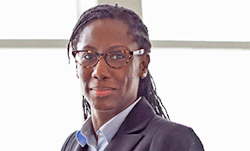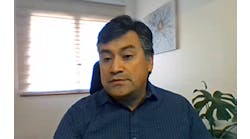Survive and thrive in the post-pandemic future
“The fourth is our darkest scenario, Divisive Terrain. It includes continuing high global infection and reinfection rates.” Kalypso’s Rein Singfield outlined a range or post-pandemic scenarios, as well as five “no-regret” strategies for coping now.
“On March 4, I arrived back in the Dallas airport after visiting a customer, having no idea that would be my last business trip of 2020,” said Steve Riordan, global director, CPG (consumer packaged goods) & Life Sciences, Kalypso. He and Rein Singfield, manager, Kalypso, co-presented the keynote session “Next in CPG: Survival tactics for the post-pandemic future,” this week at Automation Fair at Home, presented by Rockwell Automation.
Kalypso is a wholly owned subsidiary of Rockwell Automation. Founded in 2004 to accelerate digital transformation, the company offers research, advice and consulting to improve business results.
“Over the next days, it became clear Kalypso would need to develop a view of the pandemic to inform its guidance,” continued Riordan. “We aim at leaders who discover, create, make and sell new products using digital threads to inform and expedite the process. Scenarios can help show us how these digital threads change under the pandemic.”
The company put together a team that developed four scenarios for the future, to provide goals and to offer other companies “five no-regret moves you can take to prepare your team,” Riordan said. “A scenario is not a prediction, nor is it a disaster recovery plan. It’s a plausible, provocative alternate view that can be regularly consulted and updated over time.”
The first scenario, called Flourishing Communities, is the rosiest. The economy snaps back rapidly due to vaccines, treatments and new behaviors. Meanwhile, society is supported by governments, and is able to quickly return to consuming, remembering lessons like which companies had helped, and the practicality of working from home.
In the second scenario, Big Brother Is in Control, governments become heavy handed. A short period of optimism is followed by a period of despair as the pandemic returns. Social distancing, strict border control, mass testing and contact tracing last until 2025. Survival instincts cause consumers to be increasingly self-interested and governments to push for countries to be self-sufficient.
Scenario 3, Regenerative Systems, involves a long recovery where mass testing and contact tracing result in a decreased number of cases. The public has to share private information, but takes pride in doing so as a necessity. By 2025, much of society has emerged, but with a sense of mortality and fragility that tempers consumerism, promotes conservative behavior and brings more attention to sustainability.
“The fourth is our darkest scenario, Divisive Terrain,” said co-presenter Rein Singfield, manager, Kalypso. “It includes continuing high global infection and reinfection rates.” Multiple impacts without a chance to recover mean jobs are lost at a rapid rate, and many retail jobs will never return. The economy declines 25% and the wealth gap widens as companies re-shore and automate. Many Millennials and Gen Zs delay or give up dreams of homes and families, and dense cities fade as people move farther apart. Online sales grow, dominated by companies that make them safe, economical and convenient.
“Real life is most likely to be some combination of these four scenarios, varying over time and in different places,” Singfield said, but they suggest common goals for digital roadmaps. “Companies need to be faster, smarter, more virtual and more adaptive,” she said. They can use digital threads to become 40% faster to design closer to changing needs. They can become smarter with advanced analytics and information management, and more virtual with digital twins for both product and production. Finally, being more adaptive allows them to reconfigure machinery and products to meet market demand.
Singfield left attendees with five “no-regret moves” that will help in any scenario. First, “Create data science wizards,” she said. Data science resources will be valuable no matter what happens. Second, she said, “Build precision into product portfolio management.” Use digital threads to focus goals on the right products for the times.
Third, “Make models and simulate first,” Singfield said. “Make and test products before you introduce them, and understand the impact of product decisions before you implement them.” Fourth, “Harness the SHOUT of the consumer,” she said. They’re talking to you through social media and other channels; rack their wants and needs so you can be first and ready to satisfy them.
Finally, “Drive sustainability for both planet and profit,” Singfield said. “It’s in demand by customers and Wall Street.” Many consumers will pay a higher price, and it drives cost out of production with energy and material savings.
The editors of Control, Control Design and Smart Industry are providing coverage of Automation Fair At Home, bringing you breaking news, innovations and insights from the virtual event. Once Automation Fair At Home is over, the editors will put together an event report featuring the top news. Pre-order your copy today.






